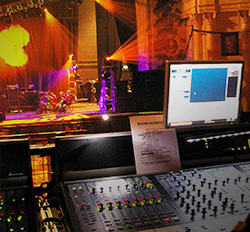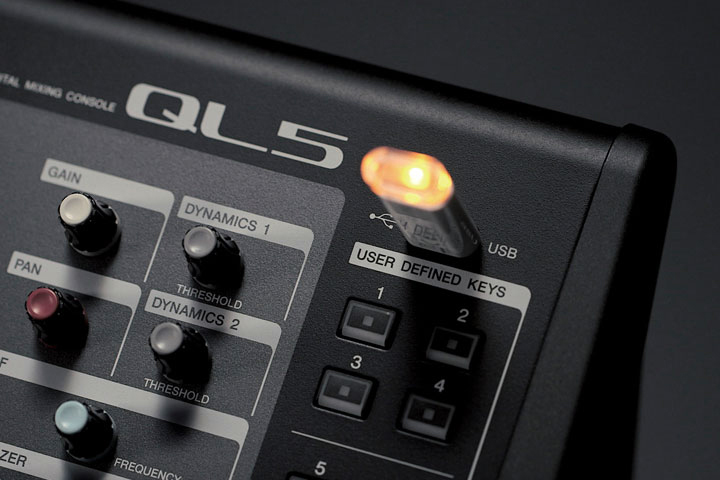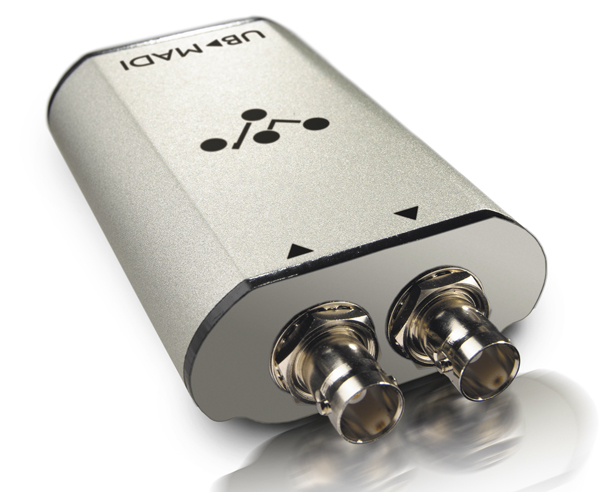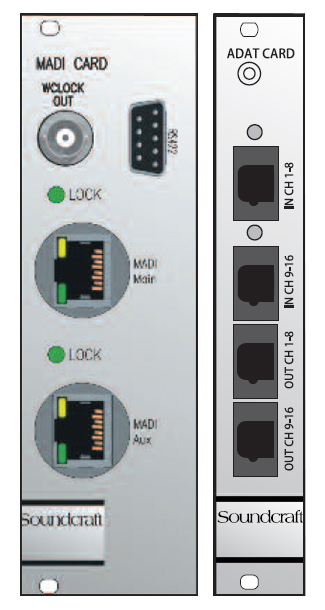
Digital mixing consoles provide wealth of capabilities for recording, designed to provide simple onboard 2-track capability to interfacing directly with computer-based multi-track recording systems.
Whether configured to do so from the factory or by using optional output cards, many consoles can output MADI, a digital protocol with 64 channels of audio, or ADAT optical, a digital protocol that sends eight channels down each optical cable. Both of these are used by many recording systems for multi-channel audio transport. AES/EBU and S/PDIF are two other common digital audio protocols to interface recording and playback equipment.
Digital snake systems, stage boxes and networks present further advantages when it comes to recording. Instead of having just one isolated output located at the snake head, many digital transport systems have multiple splits that can be placed anywhere along the network, accommodating remote recording, webcasts, broadcast feeds, and any other sends that may be required.
All of that said, we thought it instructive to take a look at some specific capabilities of current digital console series. Note that this isn’t intended to be comprehensive, but rather is a roundup of highlights that can serve as the basis for your own further investigation.
Yamaha QL Series. Provides convenient recording capabilities for everything from basic 2-track to multi-track recording and playback. A standard USB flash drive plugged into the front-panel USB port serves as media for direct 2-track recording in mp3 format, where, for example, the recording can be handed to performers as soon as the show is finished.
Sound files in mp3, AAC, or WMA format saved on the flash drive from a computer or other source can be played back as well for handy background music or sound effects without the need for extra playback equipment.
On the other end of the spectrum, with Dante Virtual Soundcard software it’s possible to transfer audio directly to a Windows or Mac computer connected to the Dante network.
With an appropriate DAW such as Steinberg Nuendo Live (sold separately) running on the computer, up to 64 tracks can be recorded simultaneously. (Note that Nuendo Live is included with Yamaha CL Series consoles.) It’s a great way to capture professional caliber live performances and also is useful in creating the tracks needed for virtual sound checks. (More here)
DiGiCo SD Series. Capabilities vary depending on model but suffice to say there’s plenty of facilities. For example, the proprietary Stealth Digital Processing engine applied to the SD7 provides 896 simultaneous optical, 224 MADI, 24 AES/EBU and 24 analog connections.
Further, the SD Rack supplies up to192 kHz high resolution analog I/O converters and a choice (via option cards) of multiple digital formats, including MADI, AES, and ADAT. Users can also select other sample rate options for specific outputs – MADI at 48 kHz for recording feeds, for example.
UB MADI presents another option, feeding a MADI stream in and out of a PC or Mac via USB. Bus-powered, it uses a USB-B type socket and standard cabling, taking up minimal space while providing quality location recording or a virtual sound check system.
In addition, DiGiGrid MGB (coaxial link) and MGO (optical link) interfaces foster plugging in a coaxial MADI-enabled device to Waves SoundGrid for recording, processing and playback of up to 128 audio channels. It can even record to two computers simultaneously. (More here)
Soundcraft Vi Series. The new Vi3000 provides integration into Dante audio networks and access to DAWs for live multi-track recording and virtual sound checks via MADI.
Also included are MIDI, USB and Ethernet ports, along with a DVI output and four channels of AES I/O. And optical MADI interface is fitted as standard, allowing direct connection to a Pro Tools HD recording system via a third-party converter box or any MADI compatible device.
The ADAT card provides two optical 8-channel ADAT inputs and outputs, with selectable 44.1/48/88.2/96 kHz operation. Optical inputs and outputs are provided on Toslink connectors and can be used to record to, for example, a hard disk recorder or other device with ADAT inputs and outputs, as well as receive playback.
In addition, the MADI card offers a simple recording solution for the Vi Series. Additional MADI cards can be fitted by exchanging with other I/O cards. And, both standard and compact stage boxes offer expansion slots for Studer D21m I/O cards, allowing connection to most popular digital formats and also accommodating a MADI recording interface. (More here)



